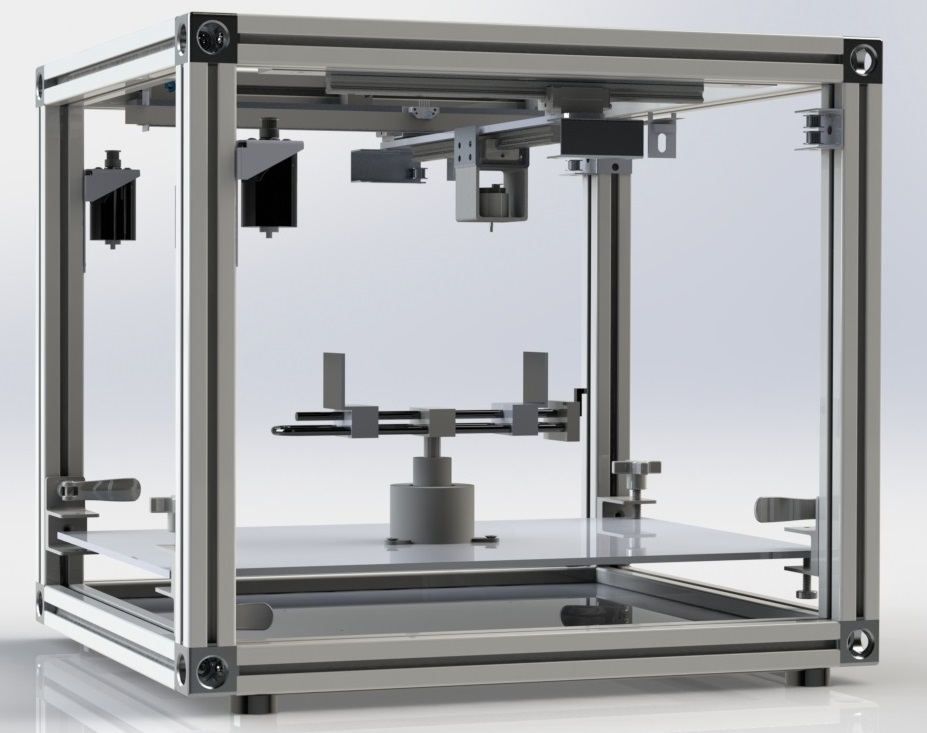Project Objective
Design, analyze, and build a functional automated button life tester that can be used to test a variety of products under normal operating conditions by 06/16/2017 at a cost of less than $1600.

Team
- Michael Boyles - mboyles@bpa.gov
- Ryan Erickson
- Oscar Patlan - OscarPatlanC@gmail.com
- Kevin Meichtry - kjmeichtry@gmail.com
Customer Requirements
Simplexity Product Development has sponsored Portland State University to design and build an automated device to test buttons under normal operating conditions. The device must provide automatic two-axis (horizontal) movement capability and force-controlled actuation that can emulate the action of a finger pressing a button. The products that will undergo testing are unknown and can vary in both size and shape, so the device must also be able to accommodate a variety of shapes and sizes in both its immobilization method and in the vertical height of the specimen plate relative to the testing actuator. Finally, the device is likely to undergo millions of cycles over the course of many product tests, and must be designed to last. Any wearable parts must be available "off the shelf" or be easily and cheaply manufacturable.
Design Challenges
The design team’s challenges involved selecting certain parts that work with the overall design architecture while also staying within the project budget. These challenges included:
Button Actuation: Voice coil actuators were chosen as actuation method due to their wear and force control characteristics. However, these actuators are expensive, and balancing stroke, maximum force, and heat dissipation against part cost is a delicate act.
Encoder Mounting: Simplexity requested that our control scheme include linear encoders for position feedback of the carriage. Such encoders require mounting in a way that prevents excessive deflection while simultaneously working in the low-clearance environment that the carriage subsystem provides.
Vertical Axis Adjustment: Cam handles provided the most user-friendly method of locking the specimen plate into position during test preparation. However, the handles had clearance issues and were more expensive relative to other reasonable alternatives, such as wingnuts and hex screws.
CoreXY Drive System: Implementing the CoreXY drive system allowed for less dependence on base structure stiffness. The biggest challenge with implementing the CoreXY drive system is working with a base structure with a limited footprint while maintaining a working area of 12x12 inches.
Outcomes
The team is currently waiting for components to arrive to begin assembly of the final design. Final outcome of this project will be outlaid after fabrication and performance testing. Key performance measures that will be measured are:
- Smooth mechanical carriage operation
- Positional accuracy
- Actuation force
- Product life and reliability
Final deliverables of this project will include:
- Fully assembled and functional automatic button tester
- CAD model of full assembly
- Bill of materials
- 2D drawings of custom parts
- Component spec/data sheets
- Design justification report and pugh charts
- Calculations, experiments and test results
- Final report